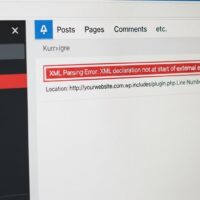
Automating Email Marketing in Magento 2: A Comprehensive Guide
Automating email marketing in Magento 2 can significantly enhance the efficiency and effectiveness of your email campaigns. By setting up automated workflows, you can ensure timely communication with your customers, leading to improved engagement and increased sales. This guide will walk you through the process of setting up email automation in Magento 2, from choosing the right tool to optimizing your campaigns.
1. Choosing an Email Automation Tool
Selecting the right email automation tool is crucial for the success of your email marketing campaigns. There are several tools available for Magento 2, each offering unique features and capabilities. Consider the following options:
- Dotdigital Engagement Cloud: A powerful tool that offers advanced segmentation, personalization, and automation features. It integrates seamlessly with Magento 2, allowing you to create targeted and personalized email campaigns.
- Mailchimp: A popular email marketing platform known for its user-friendly interface and robust automation capabilities. Mailchimp offers a range of templates and integrations, making it a versatile choice for Magento 2 users.
- Klaviyo: A comprehensive email marketing tool that focuses on data-driven automation and personalization. Klaviyo offers advanced analytics and reporting features, helping you optimize your campaigns for better performance.
When choosing an email automation tool, consider your specific needs, budget, and the level of integration and support offered by the tool. Select a tool that aligns with your business goals and provides the features you need to create effective email campaigns.
2. Installing the Email Automation Tool
Once you have chosen an email automation tool, the next step is to install and set it up in your Magento 2 store. This process typically involves the following steps:
- Install the Extension: Most email automation tools offer extensions or plugins for Magento 2. Download and install the extension from the Magento Marketplace or the tool’s official website. Follow the installation instructions provided by the tool to ensure a smooth setup.
- Connect via API: Some email automation tools may require you to connect to their platform via an API. This involves generating API keys from your Magento 2 store and the email automation tool, and configuring the connection settings. Ensure that the API integration is secure and properly configured.
Proper installation and setup of the email automation tool are essential for seamless integration with your Magento 2 store. Ensure that you follow the tool’s documentation and guidelines for a successful installation.
3. Setting Up Automation Workflows
Creating automation workflows allows you to trigger email campaigns based on specific actions or events. This ensures that your customers receive relevant and timely emails, enhancing their shopping experience. Here are some common automation workflows you can set up:
- Welcome Email Series: Create a series of welcome emails that are triggered when a customer creates an account on your Magento 2 store. This series can include introductory offers, product recommendations, and a warm welcome message to make new customers feel valued.
- Cart Abandonment Emails: Set up cart abandonment emails that are triggered when a customer adds items to their cart but does not complete the purchase. These emails can include reminders, incentives, and personalized recommendations to encourage customers to complete their purchase.
- Post-Purchase Follow-Ups: Create post-purchase follow-up emails that are sent after a customer completes a purchase. These emails can include order confirmations, shipping updates, and requests for product reviews to enhance customer satisfaction and loyalty.
By setting up these automation workflows, you can engage with your customers at various stages of their shopping journey, providing them with relevant information and offers that encourage them to take action.
4. Creating Email Templates
Designing visually appealing and compelling email templates is essential for the success of your email campaigns. Your email templates should reflect your brand’s identity and provide a seamless experience for your customers. Consider the following tips when creating email templates:
- Visual Appeal: Use a clean and professional design that aligns with your brand’s visual identity. Include high-quality images, consistent color schemes, and clear typography to create visually appealing emails.
- Compelling Copy: Write compelling and concise copy that clearly communicates the purpose of the email. Use persuasive language and a clear call-to-action to encourage customers to take the desired action.
- Mobile Optimization: Ensure that your email templates are optimized for mobile devices. A significant portion of your customers will view your emails on their smartphones, so it’s crucial to provide a seamless mobile experience.
Creating effective email templates is a critical step in your email marketing strategy. By focusing on visual appeal, compelling copy, and mobile optimization, you can create emails that resonate with your customers and drive engagement.
5. Testing and Optimizing Your Automation Workflows
Testing your automation workflows is essential to ensure that they function as expected and provide a seamless experience for your customers. Regularly monitor the performance of your email campaigns and make adjustments as needed to improve their effectiveness. Consider the following steps when testing and optimizing your automation workflows:
- Test Emails: Send test emails to yourself and your team to review the content, design, and functionality of your emails. This allows you to identify any issues or areas for improvement before sending the emails to your customers.
- Monitor Performance: Use the analytics and reporting features provided by your email automation tool to monitor the performance of your campaigns. Track metrics such as open rates, click-through rates, and conversion rates to assess the effectiveness of your emails.
- Make Adjustments: Based on the performance data, make adjustments to your email templates, automation workflows, and overall email marketing strategy. Continuously optimize your campaigns to improve their effectiveness and achieve your business goals.
By regularly testing and optimizing your automation workflows, you can ensure that your email campaigns are as effective as possible and provide a seamless experience for your customers.
6. Personalizing Your Email Campaigns
Personalizing your email campaigns can significantly enhance their effectiveness and improve customer engagement. By using customer data, such as purchase history and browsing behavior, you can create personalized and relevant email campaigns that resonate with your customers. Consider the following tips when personalizing your email campaigns:
- Segment Your Audience: Use the segmentation features provided by your email automation tool to divide your audience into specific groups based on their behavior, preferences, and demographics. This allows you to create targeted and personalized email campaigns that are relevant to each segment.
- Dynamic Content: Incorporate dynamic content in your email templates that changes based on the recipient’s data. This can include personalized product recommendations, tailored offers, and customized messages that enhance the customer experience.
- Behavioral Triggers: Set up behavioral triggers that send personalized emails based on specific actions or events. For example, you can send a follow-up email with related products after a customer makes a purchase or a reminder email if they abandon their cart.
By personalizing your email campaigns, you can create a more engaging and relevant experience for your customers, leading to improved open and click-through rates and enhanced customer loyalty.
7. Analyzing and Improving Campaign Performance
Regularly analyzing the performance of your email campaigns is crucial for identifying areas of improvement and optimizing your strategy. Use the analytics and reporting features provided by your email automation tool to track key metrics and gain insights into your campaign performance. Consider the following steps when analyzing and improving your campaign performance:
- Track Key Metrics: Monitor metrics such as open rates, click-through rates, conversion rates, and revenue generated from your email campaigns. These metrics provide valuable insights into the effectiveness of your emails and the behavior of your customers.
- Identify Trends: Analyze the performance data to identify trends and patterns in your email campaigns. This can include identifying the types of emails that perform best, the optimal send times, and the segments that are most engaged.
- Optimize Your Strategy: Based on the insights gained from your performance data, make adjustments to your email marketing strategy. This can include refining your segmentation, updating your email templates, and optimizing your automation workflows to improve their effectiveness.
By continuously analyzing and improving your campaign performance, you can ensure that your email marketing efforts are as effective as possible and contribute to the success of your Magento 2 store.
Conclusion
Automating email marketing in Magento 2 can help you save time, increase the effectiveness of your email campaigns, and enhance customer engagement. By following the steps outlined in this guide, you can set up email automation in your Magento 2 store and streamline your email marketing efforts. Remember to regularly analyze the performance of your campaigns and make adjustments as needed to ensure that they are as effective as possible.
By leveraging the power of email automation, you can create targeted and personalized email campaigns that resonate with your customers and drive engagement and sales. Continuously optimize your email marketing strategy to achieve your business goals and provide a seamless experience for your customers.









